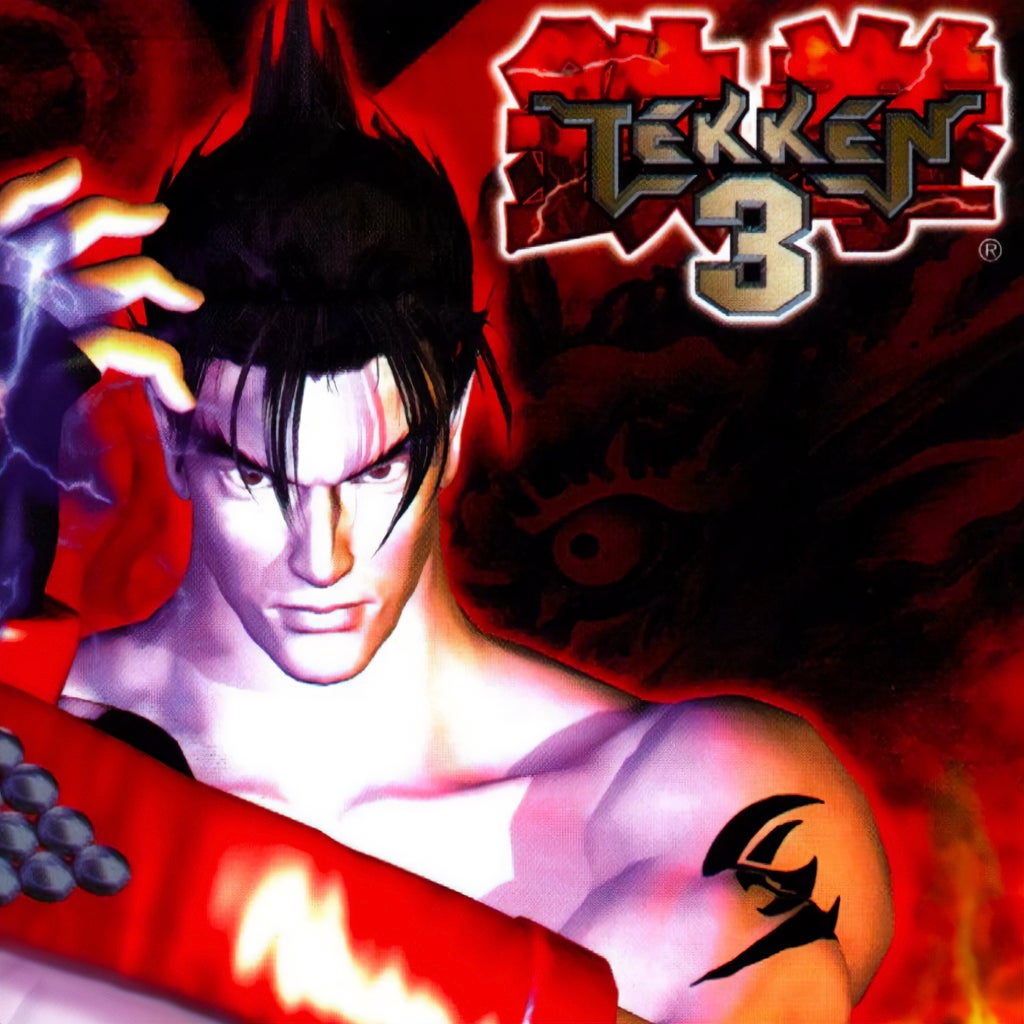Beginning as an arcade game, the 1994 released Tekken 1 was a success with critics and players alike, leading to the game’s eventual porting to Playstation a year later. In 1995, Tekken 2 was released. And in 1997, Tekken 3 was released. The Tekken games revolve around the Mishima family, with Tekken 3 focusing on Jin Kazama, the grandson of Heihachi Mishima.
In Tekken 3, Jin’s mother Jun is killed by an Ogre attacking; driven by rage, Jin seeks revenge and is confronted by the devil who leaves him with a branding. Then, Jin goes to his grandfather, asking to be trained. By 19, Jin masters the Mishima Karate style and Heihachi announces the King of Iron Fist Tournament 3, using his grandson to lure out the Ogre. Jin loses to Paul Phoenix who defeats the Ogre, leaving the tournament, believing in his victory. The Ogre then adopts his second form – the True Ogre. Jin is forced to fight the True Ogre and defeats him, avenging his mother. Instantly, Jin is gunned down by a Tekken Force squad, led by Heihachi who shoots his grandson in the head. The Devil within Jin revives him. He then dispatches the soldiers and slams Heihachi through the walls of the temple. Jin sprouts black wings and flies away into the night, Heihachi, who survived the wall, watches as his grandson escapes.
For my retro review, I want to use Tekken, specifically the plot of Tekken 3, as a way of exploring the role of mysticism and legend in game building, specifically the effect mythical themes have in engaging players and creating a desire to succeed in-game. Beyond Tekken, games use narratives to draw their players into the characters they occupy. Players become invested in the arc of certain characters, wanting some to succeed and wanting demise for others, similar to interactions readers or viewers have in their respective audiences. So narrative and plot can function as ways to create engagement between a person and a piece. However, importantly, games differ from a film, or a text, in that a player is given a degree of control as to how the narrative unfolds. In a game, we not only root for a character and will a certain future for them, we also have agency to generate that certain future, fundamentally altering how we then engage ourselves to the narrative. Our interactions have consequences, causing a personal immersion into the game’s narrative. In Tekken 3, we experience a similar immersion through the use of myth that then translates to a player’s desire to succeed in the game.
Tekken’s narrative follows a myth-like structure. We have the supernatural through Ogre and then true Ogre, the devil that marks Jin Kazama, and the powers of the various characters. The game uses traditional themes such as tragedy, familial tension, and revenge. Tekken 3 begins with tragedy from Tekken 2, Heihachi commits filicide as he takes the life of Kazuya Mishima leaving his grandson and daughter-in law to mourn. The game draws depth from its world’s past, building drama and history into the actions of Tekken 3. For example, Jin shares the devil gene with his father, the same gene that keeps him alive when his grandfather tries to kill him, like he did with his father. The game seemingly states that history will not repeat itself, saving the invested players from seeing son and father follow the same fate, making Jin’s struggle with his grandfather full of revenge. Revenge is a common trope in myth. Protagonists are slited and have to bide their time as the antagonist succeeds through their immorality. The protagonist suffers and swears that one day he will avenge whoever they lost, and are justified in their vengeance through their commitment to acting morally. The narrative uses context and then morality to justify the actions of a protagonist, allowing a player to accept a protagonist’s action that would be immoral in another context. In the case of Tekken, and myths, this justification is essential as it allows the at times egregious actions of a protagonist to feel acceptable and thus allows the plot to unfold as they seek vengeance.
Tekken 3’s use of a myth-like structure give players a level of drama and engagement in their actions that incentivize them to try and succeed in the game, building the interaction players have with the game. Myths, like fantasy and legend, bring grand themes, generally at their emotional extremes that create an engaging and occupying space for players to act in. Tekken 3’s use of myth-like structures create a narrative that pushes the player’s desire to avenge Jin’s mother and subsequently succeed in the game.


In my opinion, the game play of fighting games tends to be as devoid of narrative as you can get within the video game world, other than maybe a few snippets of dialogue between the characters at the beginning and end of the match, and whatever story hints you can gleam from the background details. So I’m naturally always floored when fighting games go with super bizarre narratives like Tekken does, with its mix of family drama, mafia plot, science fiction, and mysticism. I mean, I guess in some ways, having gameplay that is nearly devoid of gameplay allows the creators of the game to make up some really bizarre things, because they rarely ever have to be justified within the gameplay. I’m not saying that narrative elements don’t show up in the gameplay, like Jin’s canonical mystical powers and Jin’s devil form within the game, but rather, the explanation as to why and how that’s possible tend to be pretty ridiculous and extreme. I think it’s interesting that most fighting game stories could just be, “these people get together and fight. Some of them are robots. Who cares.”, but instead Tekken went whole hog on making up some crazy stories.